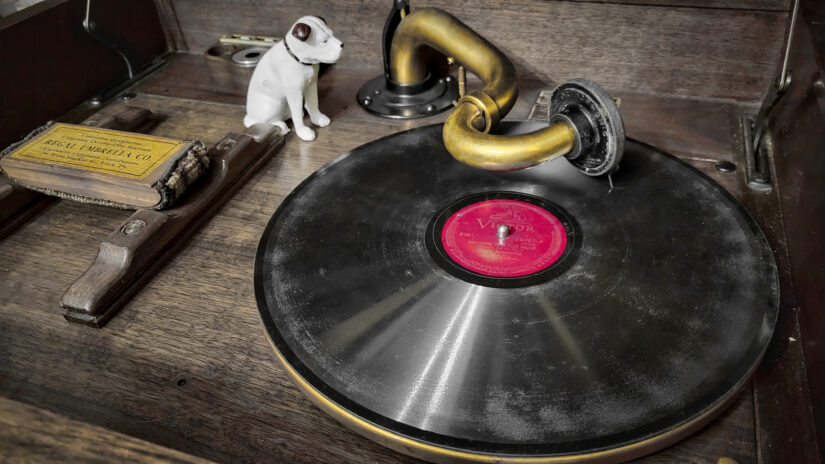Evolution of Recorded Music: The Rise of Orthophonic Recording
The evolution of recorded music has been, to this point, a series of incremental advances: cylinders, to 7 inch disks, to mass production. The next major point in this evolution, however, is pivotal and more than just slightly incremental: the transition from acoustic to orthophonic recording. Victor and Columbia, two major players in the music industry at the time, played instrumental roles in this transformation. In this installment, we delve into the intricacies of orthophonic recording, what it is, its advantages over the acoustic method, and the profound impact it had on the world of recorded music.
In the “acoustic recording” era, which includes everything prior to 1925, and many recordings up to 1927, musicians would gather around a large horn, which funneled sound waves directly onto a wax disc. The energy from these sound waves caused a stylus to etch grooves into the disc, capturing the music. While this method was revolutionary for its time, it had significant limitations. The range of frequencies it could capture was narrow, often missing the rich undertones and overtones of instruments and voices. Additionally, the volume was solely dependent on the proximity and loudness of the sound source to the horn, leading to an uneven and sometimes muffled recording. Musicians would literally take turns moving nearer to or further away from the horn, depending on which portions needed to be recorded more prevalently than the others.

Orthophonic recording, which means “correct sound,” was a leap forward in sound technology. Victor, with its “Victrola” and Columbia with its disc records, were at the forefront of this change which occurred around 1926. There were two major improvements to recording and playback at this time:
- The advent of vacuum tube technology allowed for microphones to be used with volume control during the recording process, allowing for a much more clean and clear recording process. Indeed, entire orchestras could now be recorded at once.
- Orthophonic improvements to the phonograph soundbox and an improved diaphragm for playback, allowing it to capture a broader range of frequencies. This meant recordings were richer, clearer, and truer to the original performance.
The new design of the soundbox, intricately shaped to focus on specific frequency ranges, was a breakthrough. The design was inspired by the natural physics of sound, enabling the system to resonate more harmoniously with the music. It was no longer just about capturing sound; it was about capturing the essence and emotion of the performance. This innovative design allowed for an even distribution of sound waves, ensuring a consistent recording quality across the board.
Another significant enhancement was the introduction of the electrically-powered turntable. Before orthophonic recording, gramophones were powered manually, leading to inconsistent speeds and, subsequently, fluctuations in pitch. The electric turntable offered a consistent speed, ensuring that the music played back at the same pitch and tempo as it was recorded. This attention to detail, combined with the improved soundbox and diaphragm, made orthophonic recording a game-changer, setting a new industry standard.
The key advancement in orthophonic recording, however, was definitely the use of electronic amplification. Instead of relying solely on the natural energy of sound waves, microphones captured the sound, and amplifiers boosted their strength. This not only improved volume levels but also made it possible to capture subtler nuances of musical performances.
The advent of orthophonic recording was nothing short of transformative for the music industry. For the first time, listeners could experience a depth and clarity in recordings that closely mirrored live performances. This enhanced fidelity meant that artists could experiment more, leading to a richer tapestry of musical genres and styles.
Moreover, the improved sound quality made recorded music more accessible and enjoyable to a broader audience. People were more inclined to invest in gramophones and records, knowing they’d receive a premium listening experience. This surge in demand naturally benefitted companies like Victor and Columbia, solidifying their places as industry leaders.
